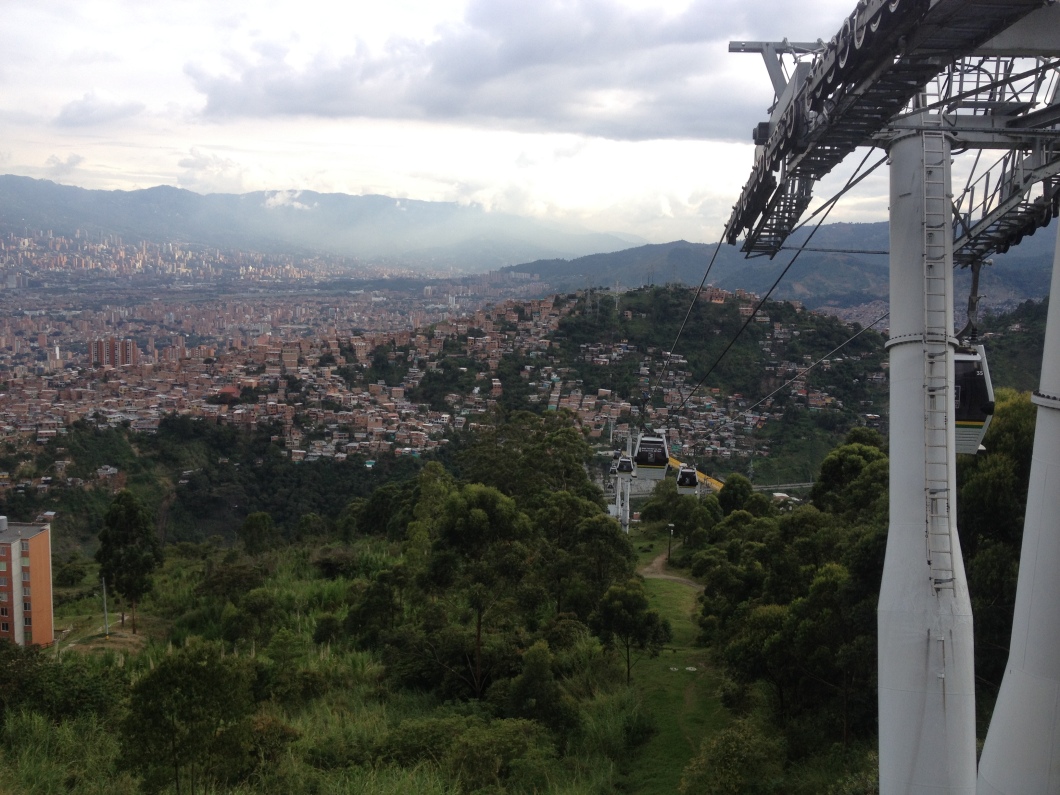Bogotá might be the capital of Colombia, but as a city with more than 8 million citizens it still lacks a metro system. The city does have a speedy rapid bus system called Transmilenio since 2000. However, the holy grail – a metro line – has been debated for more than 60 years. Corruption and internal struggle in governance made this distant dream for the capital.
One might presume, corruption is rife. However, the second biggest city of Colombia, Medellín, has been able to install a metro system. And they are proud. Many citizens from Medellín don’t hesitate to joke about the capital. Not only to joke about competing football clubs, the weather (which is way better in Medellín), and the coldness of the capital’s citizens: above all people love to joke about the failing municipality not being able to create a metro system for the capital.

The metro system is Medellín’s proudest achievement. This is clear as soon as you enter the gates. Ignorant of the rules, as I traveled on one of the spring-like November days, i was approached by people informing me that I wasn’t allowed to eat or drink on the metro. Therefore understandably the stations and the metro trains are extremely clean. Metro staff and citizens alike make sure people uphold its condition.
Public transport is important for environmental reasons, but moreover, it can enhance inclusion. Therefore the metro system extended its reach with a metro cable: gondola lifts connect people on the either side of the mountains. The ticket price is 1.800 Colombian Pesos(50 euro cent) for a single ticket. It does not matter if you live in the outskirts of town and go to the opposite outskirt, or only use to metro for two stops. The price remains the same. This makes it more accessible for poorer people who tend to live outside the center.
When you will go to a football match in Medellín, people from the mountain communities will proudly wave flags featuring the metro cable. The metro cable has become a symbol of the people living at the edges of Colombia’s second biggest city.

Another way Medellín tries to create opportunities for people in suburbs are the famous escalators. The houses built at the edges of hills are not only hard to reach but also the streets are very steep. I definitely wonder how elderly people and people with reduced mobility make their way up to their homes. In neighborhood Comune 13 the municipality installed escalators to provide a quicker and easier way to walk through the neighborhood. Other projects from the municipality include the construction of sidewalks and stairs. And yes, they even build slides to make the route shorter.

